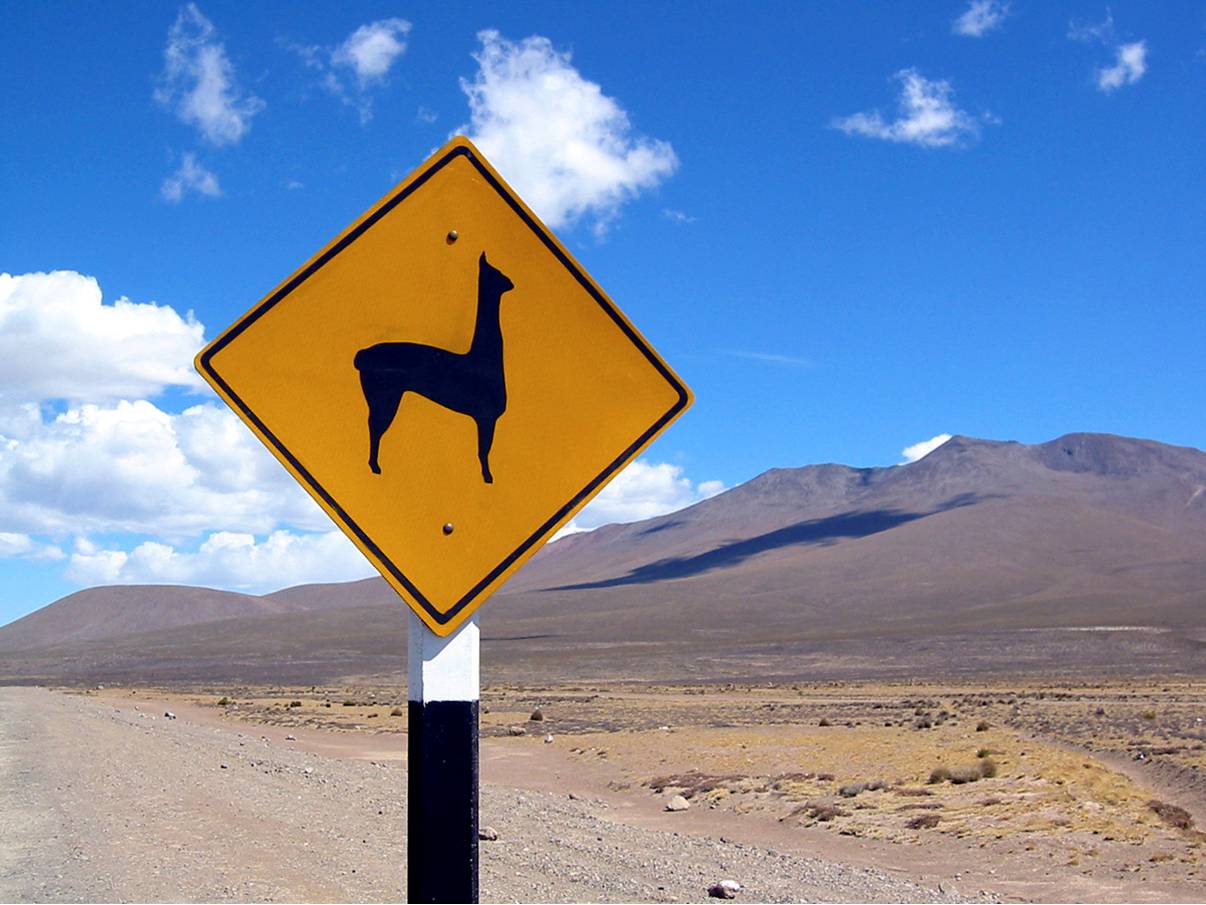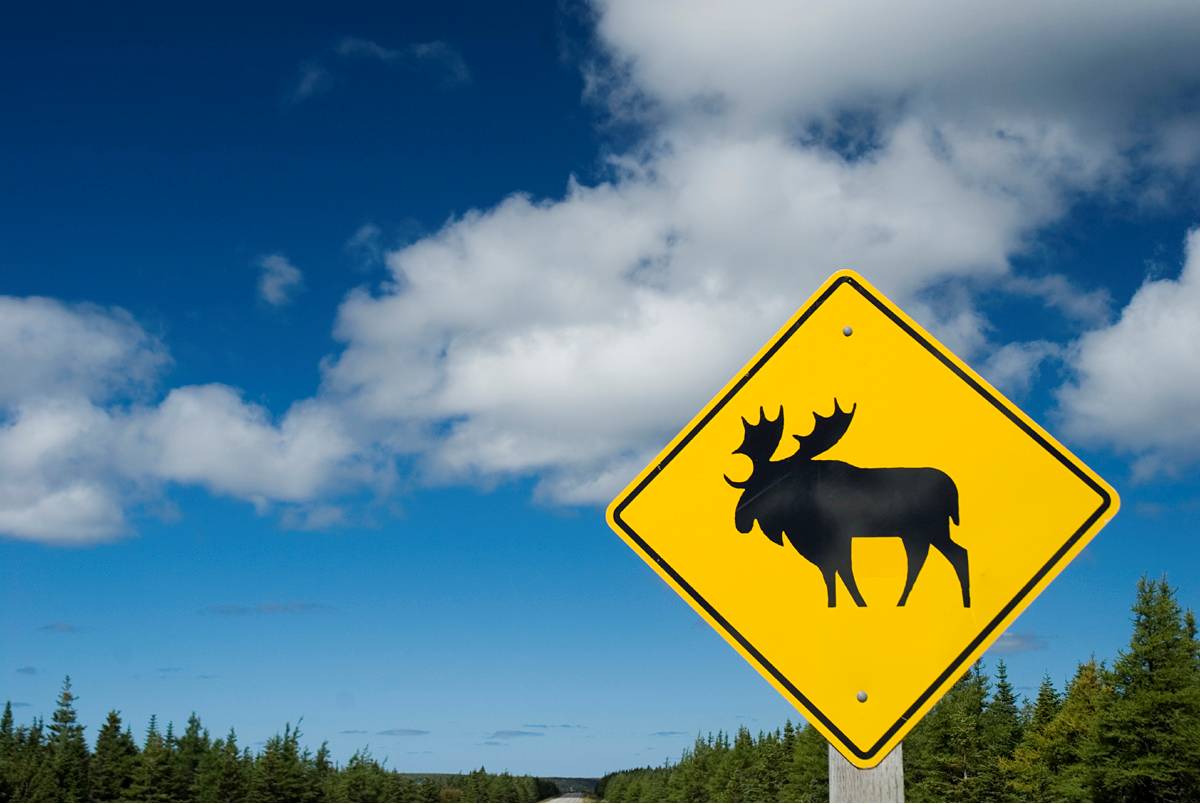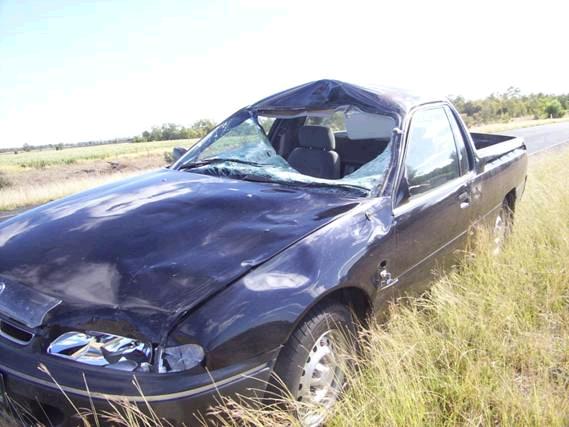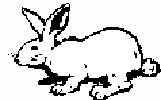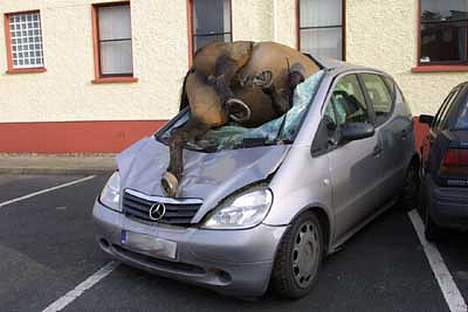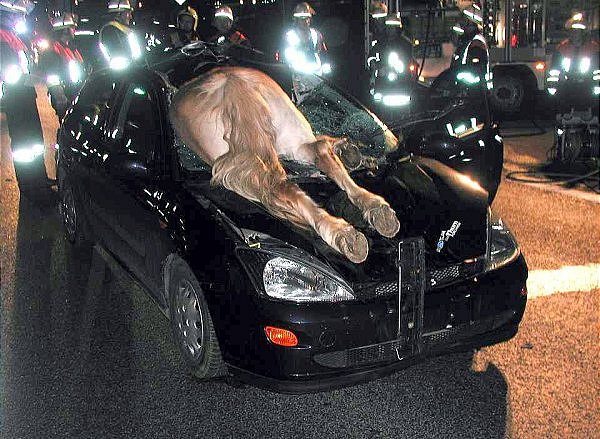Chapter 6: ANIMALS ON THE ROAD
Wild animals are unpredictable, easily scared and often panic at the sight of a motor vehicle. Animals will wander onto or cross a road in search of food without any thought of traffic. Nocturnal grass eating animals are attracted to country highways as often the grass is more plentiful and greener beside the road than in the neighbouring paddocks. These animals start to move as the temperature lowers in the evening. This might be earlier in winter or following a large storm.
In outback regions there are section of highway that are unfenced allowing stock (cattle) to access the road. Large cows and bulls are slow moving and can be hard to see at night. However fences can become damaged following storms or flooding increasing the dangers from wandering stock.
WHAT TO DO
Obey any warning signs. If you are warned of animals in the area, slow down, be alert, look ahead.
If you see an animal on the road approach slowly, be prepared to stop; do not rev the engine or sound the horn as this is likely to startle the animal and could cause damage to vehicles.
Remember your eyes steer the vehicle and therefore look to where you want to go.
If animals appear suddenly in front of your vehicle, resist the urge to swerve. It is far better to brake in a straight line (even if there is impact and damage) than to swerve and potentially leave the road and possibly roll the vehicle. From your driver training you have learnt how to undertake a lane change manoeuvre at speeds below 80 km/h, turning more severely or at higher speeds can compromise your safety.
You will definitely come off worse in a crash with any large sized animal.
On dusk (sunset) as the temperature cools many nocturnal Australian animals like kangaroos start to feed and seek water. Roads are cambered to allow water to drain to the sides. This often encourages water to pool and lush green grass to flourish beside the highways. Kangaroos are unpredictable and may panic and change direction or stay frozen in place by the glare of your headlights. If confronted with an animal of this size blocking your path, brake hard to reduce speed. It is advisable though not to swerve unless safe to do so. Kangaroos due to their numbers are the most likely animal you will come across. If you see a kangaroo warning sign, a kangaroo to the side of the road or you are driving though a well forested area SLOW DOWN.
If a smaller animal like a rabbit or feral cat crosses your path, DO NOT SWERVE, but brake firmly if safe to do so. Such a small animal will do little damage to your vehicle if you cannot stop in time.
In the event that an animal is hit by your car, BE AWARE: In Australia there exists laws pertaining to the humane care of these injured animals. It may be necessary to seek medical assistance or notify its owner if a domestic animal. If the animal is very injured, the law advises to try and suffocate it to end its suffering. If the animal has been killed it should be removed from the roadway.
DID YOU KNOW?
In the state of Tennessee in the United States of America; a law has been passed granting the ownership of road kill to the motorist that killed the animal. This means that any Tennessee driver that kills local fauna like a deer, squirrel, rabbit or raccoon can take the animal home and eat it.
(Written by Joel Neilsen, Managing Director, Safe Drive Training)

